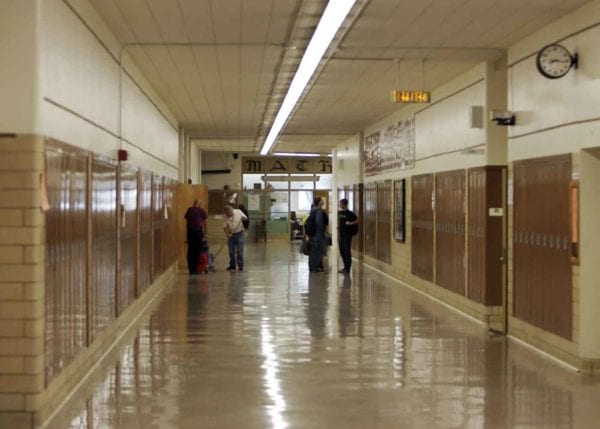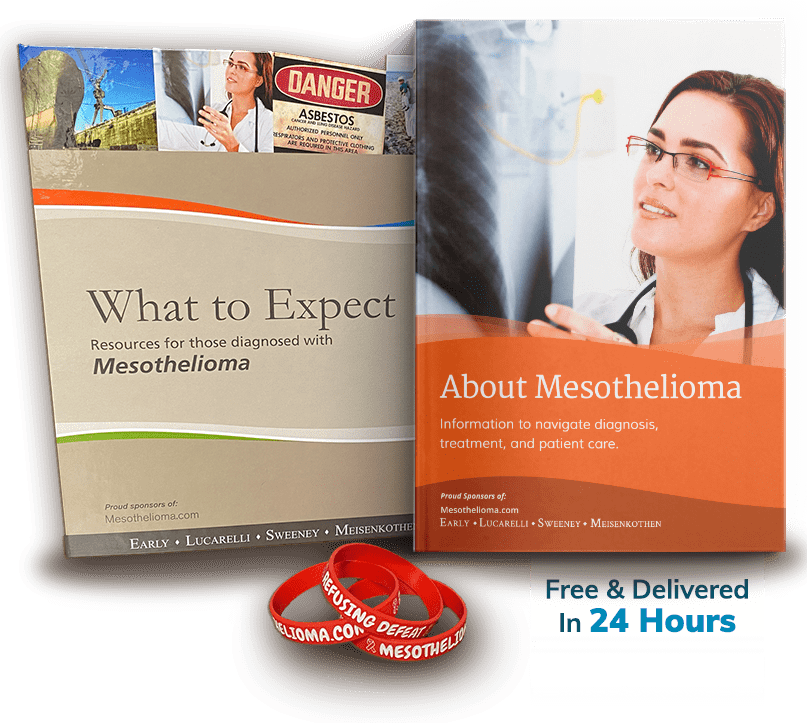01. Asbestos Use in Schools
How Was Asbestos Used in Schools?
Asbestos is frequently found inconstruction productsused in school buildings. As a result, millions of students and school staff experience exposure to asbestos.
Before 1980, the mineral was commonly used in a variety ofproducts. Nearly half of all primary and secondary school buildings in the United States were built between 1950 and 1969. During those years, asbestos use was near its peak.
Throughout the 1970s, the federal government began regulating asbestos use. By the 1980s, asbestos was largely regulated and no longer used in new production.
There is no safe level ofasbestos exposurebut asbestos is not as dangerous when in good condition. However, the average age of U.S. schools is about 44 years old. As a result, asbestos materials in schools may be at high risk of wearing down and releasing fibers.
Today, asbestos is found in many locations throughout schools.
Asbestos in older school buildings continues to pose a health risk to anyone in the vicinity. However, untrained individuals should not attempt to move or handle asbestos. If asbestos is found or disturbed, the school should seal the area. Then, abatement professionals can address the issue.
02. Notable Schools
Notable Instances of Asbestos in Schools
Asbestos was used in many schools nationwide. The carcinogen is commonly found in building materials installed before 1980.
Many schools and school districts have faced asbestos concerns.
Asbestos in Pennsylvania Schools
TwoPennsylvania学校districts have faced asbestos scandals in recent years.
- In 2016, routine inspections around the Scranton School District found 70instances of asbestos in school district buildings. Several school district officials were notified. They chose to hide the matter from district officials, staff, parents and students.
- In 2018, millions ofasbestos fibers were found around PhiladelphiaSchool District elementary schools.
- In the 2019 – 2020 school year alone, 11Philadelphia School District schoolswere closed due to asbestos contamination.
Asbestos contamination was found in several locations, including classrooms, restrooms and cafeterias.
Asbestos in Chicago Public Schools
A report from the EWG Action Fund found extensive asbestos exposure risks in Chicago-area public schools. The report compiled school records from 2013. EWG analysis revealed 184 schools with extensive asbestos contamination.
The presence of asbestos was found in multiple building materials in 1,174 locations across the schools.
Locations of asbestos contamination in Chicago Public Schools include:
- Auditoriums
- Boiler rooms
- Classrooms
- Restrooms
- School corridors
- Storage areas
- Teachers’ lounges
However, a 2016 update to the report found only 11 of the 184 schools had taken action to address the asbestos problems.
Asbestos in Manhattan Beach, CA
In 2018, the South Coast Air Quality Management District (SCAQMD) received complaints of disturbed asbestos at Mira Costa High School in Manhattan Beach,California. The SCAQMD is a regional agency tasked with ensuring air quality standards.
The complaints resulted from two contractors exposing asbestos flooring materials. This work happened during school registration. Parents and students were in the adjacent library registering for the school year.
As a result, SCAQMD served the Manhattan Beach Unified School District with 27 violations. These violations included failing to have an asbestos management plan. Management plans are required of all public schools with asbestos materials.
03. Who Is at Risk?
Who Is at Risk of Exposure in Schools?
Asbestos use in schools has exposed many individuals to the mineral. This includes students, teachers and school staff.
Exposure can happen at any time and from a variety of sources. Adults should be aware of the risk of asbestos exposure to protect their children and themselves.Secondary exposuremay also affect families of those exposed to asbestos at school.
Student Asbestos Exposure Risk
School children of all ages are at risk of asbestos exposure in schools. According to the U.S. Environmental Protection Agency’s (EPA) Office of Inspector General (OIG), children are at an increased risk of asbestos exposure. This is because students:
- Are more likely to breathe in fibers through their mouths
- Are more active
- Breathe faster than adults
- Tend to spend more time on the floor, where asbestos fibers are likely to settle
- Are more likely to put things in their mouths (such as toys, crayons and other products that could contain asbestos)
According to the EPA’s Office of Inspector General, the above is especially concerning for younger children.
The relatively young age of students may also be problematic according to the OIG. An OIG report reasoned childhood exposure could increase the risk of developing mesothelioma later in life.
“Mesothelioma risk, for instance, increases as time from first exposure increases. Therefore, early childhood exposure greatly increases risk because it allows for alonger period of latency.”
– EPA Office of Inspector General Report on Asbestos in Schools
Students Exposed to Asbestos in School Supplies
Asbestos has been found in children’s products on many occasions.
In 2018, asbestos was discovered in packs of Playskool crayons sold in dollar stores and online. A similar incident occurred in 2015 when themineral was found in multiple brands of crayonssold in dollar stores.
Teacher Asbestos Exposure Risk
School teachers have rates of mesothelioma comparable to high-riskasbestos occupations.
According to the National Institute for Occupational Safety and Health (NIOSH), teachers have a proportionate mortality ratio of 2.1. This mirrors other asbestos occupations, such as plumbers andmechanical engineers.
Other School Employees
Teachers and students are not the only people at risk of asbestos exposure in schools. Any school staff and employees may also be exposed.
For example, maintenance workers and janitors may come in contact with asbestos in boiler rooms. Asbestos was commonly used infire-resistant materials, such as asbestos cloth, asbestos board and thermal systems. School staff may have been exposed to these materials in boiler rooms.
Millions of students, school staff and teachers may have been exposed to asbestos in schools.
As a result, these individuals may be at risk of developing asbestos diseases. This could include万博专业版,asbestosisandasbestos-related lung cancer, among others.
04. Asbestos Lawsuits
Asbestos Lawsuits and Compensation
Legal proceedings are a common way to hold parties responsible for asbestos exposure. For example, individuals diagnosed with an asbestos-related disease may file anasbestos lawsuit. This may result in a verdict ormesothelioma settlement. With school exposure, the responsible parties (or defendants) can vary.
在某些情况下,个人不得choo公开se to file a lawsuit or claim against the school district.
2019年,前老师Lea DiRusso发达的内消旋thelioma from school asbestos exposure. She reached a settlement with the Philadelphia School District. The school district paid her $850,000 for her exposure and subsequent disease.
Exposed individuals may also be able to file claims against the asbestos material manufacturer. This is rarer in instances of school exposure. However, manyasbestos companiesmanufactured products leading to dangerous asbestos exposure. If someone with an asbestos disease diagnosis can tie their exposure to a specific product, they may be able toreceive compensation.
An experiencedmesothelioma lawyercan advise individuals on the best course of action for their specific cases.
Other Legal Ramifications From Asbestos in Schools
Schools failing to comply with asbestos regulations may be served with violations. This can happen when school districts or administrators are aware of asbestos but do not address the situation. These violations are often assessed by government agencies.
In the Mira Costa High School asbestos exposure case, the South Coast Air Quality Management District (an agency) served the Manhattan Beach Unified School District with 27 violations. These violations will likely result in fines, paid by the school district.
05. Preventing Asbestos Exposure
Preventing Asbestos Exposure at Schools
Federal and state governments have establishedregulationsto help prevent asbestos exposure. The Asbestos Hazard Emergency Response Act (AHERA) was established in 1986 under the Toxic Substance Control Act.
AHERA requires all school districts, including public schools, private non-profit schools and religious schools, to adhere to certain guidelines to mitigate asbestos exposure risk.
The AHERA guidelines state:
- All schools must perform inspections in their buildings for asbestos-containing materials (ACMs).
- Schools with ACMs must prepare asbestos management plans to rectify these issues. The school’s asbestos management plan can be made available to any concerned parents or staff.
- Employees must receive asbestos awareness training before handling materials.
- After an initial inspection, all buildings must be inspected every three years.
- If asbestos is found, the materials should be visually checked every six months to ensure they are not degrading.
- School districts must keep employee and parent organizations up to date by issuing annual notifications about asbestos management and removal projects.
According to AHERA, materials and products in good condition can be considered safe, but an AHERA designated person should monitor them. This individual must ensure corrective actions are performed when the materials begin showing signs of wear or damage.
These rules do not extend to private for-profit schools. Colleges are also not covered under AHERA rules.
In addition to AHERA, schools must also observe other federal asbestos regulations. This includes asbestos regulations from the EPA and Occupational Safety and Health Administration (OSHA).
For example, the National Emission Standards for Hazardous Air Pollutants (NESHAP) regulates how狗万10万提款 . This includes:
- Wetting asbestos materials during the abatement process
- Removing the asbestos as quickly and completely as possible
- Placing asbestos materials in clearly marked, leakproof containers
Removal of asbestos should always be done by abatement professionals. These regulations aim to ensure the asbestos abatement process is effective. If done correctly, they can also reduce health risks for students, teachers and the general public.




